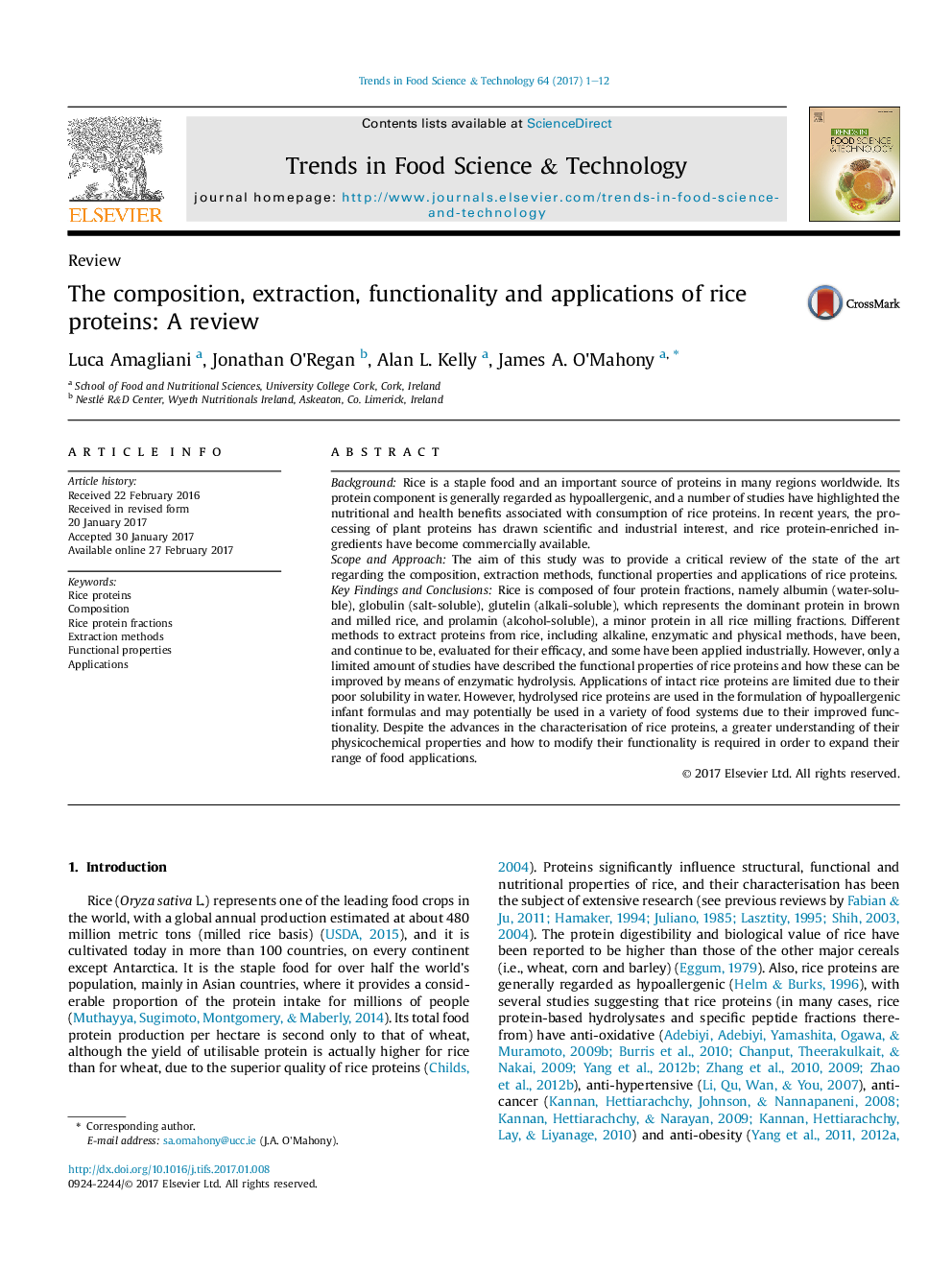| Article ID | Journal | Published Year | Pages | File Type |
|---|---|---|---|---|
| 5523771 | Trends in Food Science & Technology | 2017 | 12 Pages |
â¢Rice protein-enriched ingredients have recently become commercially available.â¢Distribution and composition of proteins in rice are presented.â¢Methods for extracting proteins from rice are discussed.â¢Functional properties and applications of rice proteins are reviewed.
BackgroundRice is a staple food and an important source of proteins in many regions worldwide. Its protein component is generally regarded as hypoallergenic, and a number of studies have highlighted the nutritional and health benefits associated with consumption of rice proteins. In recent years, the processing of plant proteins has drawn scientific and industrial interest, and rice protein-enriched ingredients have become commercially available.Scope and ApproachThe aim of this study was to provide a critical review of the state of the art regarding the composition, extraction methods, functional properties and applications of rice proteins.Key Findings and ConclusionsRice is composed of four protein fractions, namely albumin (water-soluble), globulin (salt-soluble), glutelin (alkali-soluble), which represents the dominant protein in brown and milled rice, and prolamin (alcohol-soluble), a minor protein in all rice milling fractions. Different methods to extract proteins from rice, including alkaline, enzymatic and physical methods, have been, and continue to be, evaluated for their efficacy, and some have been applied industrially. However, only a limited amount of studies have described the functional properties of rice proteins and how these can be improved by means of enzymatic hydrolysis. Applications of intact rice proteins are limited due to their poor solubility in water. However, hydrolysed rice proteins are used in the formulation of hypoallergenic infant formulas and may potentially be used in a variety of food systems due to their improved functionality. Despite the advances in the characterisation of rice proteins, a greater understanding of their physicochemical properties and how to modify their functionality is required in order to expand their range of food applications.
